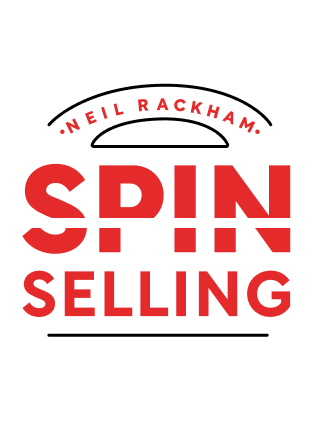

This article is an excerpt from the Shortform summary of "Spin Selling" by Neil Rackham. Shortform has the world's best summaries of books you should be reading.
Like this article? Sign up for a free trial here .
What is the evolution of sales, and what does it have to do with your sales strategy?
Of course, sales approaches have changed over time, as strategies have developed and products have gotten more varied and complex. Understanding the evolution of sales can help you see how the SPIN selling method works.
The Evolution of Sales
For over 60 years, sales organizations preached and practiced the conventional wisdom that traditional selling methods worked in all sales. Standard techniques and skills included:
- Opening the call: Establish a personal connection with the buyer, or introduce product benefits.
- Investigating the customer’s needs: Use open-ended and closed (yes or no) questions to uncover needs.
- Presenting benefits: Once you’ve determined the customer’s needs, describe the benefits of buying your product by showing how its features can help.
- Handling objections: Use a range of techniques to overcome customer objections or resistance; for instance, rephrase the objection as a question you can answer.
- Closing the sale: Make a strong closing—use pressure if the customer hesitates—that seals the deal.
Sales training placed particular emphasis on asking appropriate open-ended and closed questions during the investigation stage and on making a forceful closing. But as the evolution of sales took place, Neil Rackham’s field experience and research showed that some of these traditional techniques were a bad fit for large sales because those sales had different characteristics.
The Major Sale
Major sales require a more sophisticated interaction between sales rep and customer than is needed in small sales because they’re different from small sales in key ways:
Length of the Selling Cycle
The evolution of sales varies depending on the type of sale and length of the sales cycle. For example:
Small sales: Sales often can be handled with one call in which the customer buys on the spot. The salesperson may push hard to refute objections and close successfully. This works if it’s a one-time interaction where establishing a good relationship isn’t critical. But if the customer delays a decision, resentment created by the pressure tactics can be difficult for the sales rep to overcome in a subsequent interaction. Further, the power of a strong sales pitch wanes in a few days.
Major sales: In contrast, a major sale often requires making many sales calls to a customer over months. Since the customer doesn’t make a decision on the first call, pressure tactics that create resentment won’t work and might kill the sale by making it impossible for the sales rep to establish an ongoing relationship. In major or multi-call sales, customer deliberations occur between calls in the rep’s absence.
Traditional Openings
Back in the early days of the evolution of sales, sales training taught two ways to open a call:
1) Connect with the buyer’s personal interests. This will help you establish a relationship quickly and increase your chances of success. So try to find something personal to talk about—for instance, if you see a golf trophy in the customer’s office, or a photo suggesting another hobby, comment on that.
2) Introduce a product benefit. The idea is to get the customer’s attention and interest with an emphatic benefit statement—for instance, “We understand that productivity is a big issue for managers like you—our product will dramatically increase your output.”
While connecting with personal interests could work in small sales, it isn’t likely to help you in large sales. Researchers found that in small sales to rural stores, the most successful sales reps made more personal references than less successful reps. But in larger sales to urban stores, connecting with a customer’s personal interests had no bearing on sales success.
Further, whether you have a personal connection with a seller is probably less of a factor in doing business today than it was in the 1920s. Today, price or other factors may be more important than personal loyalty.
Another reason that establishing a personal connection may be less important today is that many customers, especially professional procurement officers who deal with multiple sales reps, have little time or patience with chit chat. They prefer that salespeople get to the point.
The practice of opening a sales call with a benefit statement has also been around for many decades. Getting the buyer’s attention by starting with a benefit might be useful in small sales where calls may last only a few minutes. But a high-impact opening seems likely to be less useful in large sales, in which the call length could be 40 minutes or more.
Researchers found no link between sales success and opening with a benefit statement. In fact, the most successful sales reps used a variety of opening methods, while less successful reps opened every call the same way.
Of course, in larger sales involving multiple calls, you can’t open follow-up calls with a person the way you did the previous time.
Also, using an opening benefit statement can get the rep into trouble, for instance by generating early objections. As previously noted, talking about benefits or solutions early in the call, before you’ve built explicit needs, undermines your chances of success.
An Opening Framework According to the Evolution of Sales
Instead of traditional methods of call opening, researchers came up with an opening framework based on strategies used by successful salespeople. The evolution of sales showed how that could work.
The first step is understanding your objectives in the warm-up or opening stage of a call. Basically, you want the customer to agree to give you a hearing and answer your questions, so you can move into the investigating stage.
To win consent, you need to specify:
- Who you are
- What you want (without delving into product details)
- Your legitimacy or right to ask questions
Opening Effectively
As previously noted, openings don’t play a critical role in large sales. You don’t need to come across as polished or rehearsed, but there are three important elements to an effective opening:
1) Get to the point of your visit quickly. Don’t spend too much time on a long wind-up. You don’t want to run out of time in the more important stages because you spent time making a lot of small talk at the beginning. You also don’t want to waste your customer’s time. In large sales, you’re not likely to offend busy customers by jumping into your topic with few preliminaries.
2) Don’t talk about solutions prematurely. As noted in the previous chapter, talking about solutions too soon can trigger objections and undermine your success. Discussing your solution early in the call also puts you in the position of answering questions about your product or services, when you need to quickly assume the role of questioner so you can develop needs.
3) Focus on asking questions. Remember that the opening isn’t the important part of the call; you want to move on to the investigating stage as soon as possible. Instead of worrying about how to open a call, spend your pre-call planning time working on questions to uncover and build needs.
Learning about the evolution of sales can help you figure out your best sales strategy, and implement SPIN selling.

———End of Preview———
Like what you just read? Read the rest of the world's best summary of Neil Rackham's "Spin Selling" at Shortform .
Here's what you'll find in our full Spin Selling summary :
- What the SPIN in SPIN Selling stands for
- How to demonstrate real value to the person you're selling to
- How to get commitment from your customer to close the sale fast






